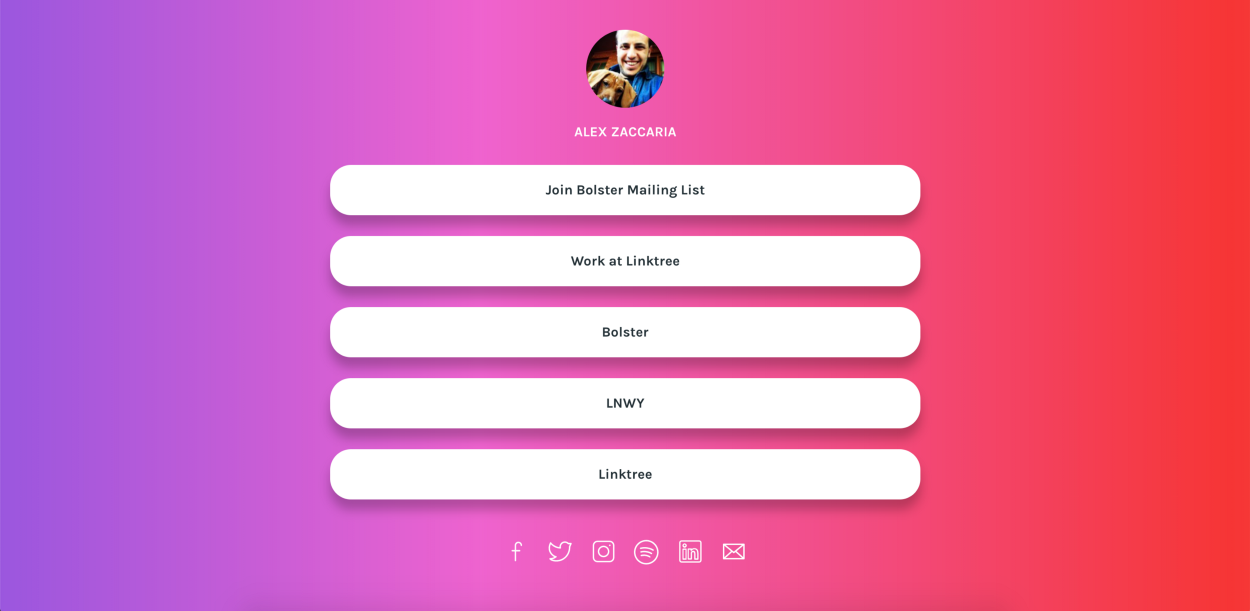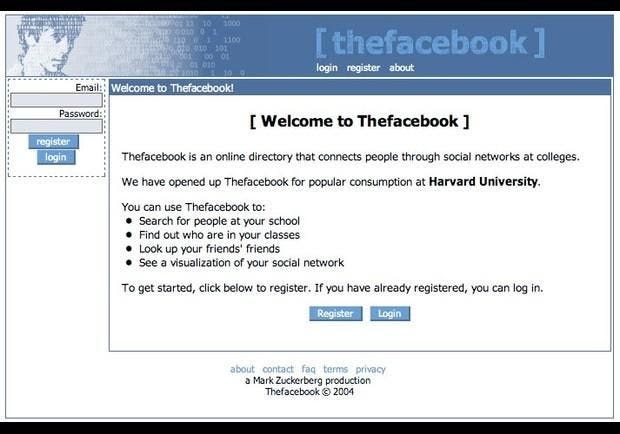- Published on
How some startups grew to thousands of users without marketing
There 2 ways to grow your consumer startup consistently:
- Digital ads
- Using = Sharing
While running digital ads is obvious, "using = sharing" is not that obvious and requires a lot of thinking in advance when choosing what idea to work on. "Using = sharing" is a method where the product is designed in such a way that the more people use it, the more it is exposed to other users.
A great example of this is questionnaire builder like SurveyMonkey, where one user creates a survey and then starts asking many other people to participate. It is like a free marketing, just because the product is designed in a such way, that sharing is a must.
Now let's analyze how some other successful startups with high sharing ratio looked like in early stages. Let's analyze what features allowed founders to grow their customer base to thousands or even millions of users organically.
Linktr'ee
Linktree is a mini website builder that allows you to create a website with multiple button links inside of it.

The problem they solve is that Instagram only allows to share one link on a profile at the time. So Linktree built a mini website builder in order to solve this problem.
They came up with an idea when founders were managing a few Instagram accounts for bands and festivals and were getting sick of having to change the link in the bio often. So they asked their developer to build a really simple landing page which allows to load multiple links onto one page.
It took them only six hours to make the first version. Later on, they only shared it around a few friends in the music industry and it got picked up organically, the first morning they woke up with two new users, the next morning with 20 and so on... Then about a week later it was uploaded onto Product Hunt by someone else and more than 3k people signed up overnight. In 3 years Linktr'ee grew to 3 million users all organically without paid marketing.
Paypal
As you probably know, PayPal provides an easy and quick way to send and request money online. With Paypal, you can transfer money (abroad) to family, friends, online shops, and auction sites like eBay.
Despite the fact that Paypal took a lot of time and resources to build a payment platform, it’s initial growth is a great example here.
At first Paypal’s first product let people beam money to each other via PalmPilots. However, the world’s millions of PalmPilot users weren’t concentrated in a particular place, they had little in common, and they used their devices only episodically.
As a result, Paypal decided to focus on sellers who used to run auctions on eBay platform. In late 1999, eBay had a few thousand high-volume “PowerSellers” and after only three months Paypal was serving 25% of them.
Patreon
Another example is Patreon which is a membership platform that allows creators to build an online page and earn a recurring revenue stream by offering their fans the opportunity to support them directly through monthly subscriptions.
Patreon came to life when co-founder Jack Conte, a musician and video creator, was frustrated with the limited earnings from ads despite having a substantial audience. He envisioned a platform where fans could directly contribute to their favorite creators in exchange for exclusive perks and content.
After building the initial version, Patreon was shared with a few creator friends who had a presence on social networks like Instagram, and it quickly gained traction. As creators promoted their own pages on the platform, they indirectly promoted Patreon to other creators. This led to more creators joining, which fueled further indirect promotion and sparked viral growth.
Within a year, Patreon grew to support thousands of creators, all through organic growth. By solving a critical problem for a concentrated group of creators, Patreon established itself as a leader in the industry.
What do these examples have in common?
The simple answer is - they built a product that was dedicated to a market concentrated in one area and it was built in such a way that every user using this product made it more visible to everyone in that area.
Paypal’s initial users where concentrated on eBay platform and Linktree’s - Instagram
The only thing they needed to do initially is to make a few famous users start using their product and all others followed them. Many users came organically because it was too easy to notice how their peers and competitors used a product.
As a result, the rate of trust was much higher because they wanted to use it the same way as their peers.
This effect allowed to avoid a lot of marketing costs and just made products grow viral.
High defensibility
Another great feature of such type of products is that high growth and visibility concentrated in one area makes it easier to build defensibility against future competitors.
Here are 2 main reasons why such products have high defensibility:
Critical mass - once a product reaches a critical number of users in a particular concentrated area, it becomes nearly impossible for competitors to enter this market with similar products. Once a critical number of ebay sellers started using Paypal, the payments through it became a standard on Ebay platform. Sellers started using "Payments accepted only through Paypal" in their description as a default.
Unit economics - with a help of high organic growth, at some level it is possible to pay much attention to main marketing parameters such as CAC, conversion rates, LTV, profit margins and etc.
It was not vital for a Linktree and Patreon focus on unit economics as long as they were growing organically.
Organic growth made them more safe against their competitors.
Lintr'ee probably would have failed with traditional marketing or paid growth, but because all users were acquired for free, they succeeded.
And most importantly, as a rule it's nearly impossible to replicate the same organic growth for incumbents with the exactly same product, so Linktr'ee and Patreon at some level could feel safe against their competitors.
Concentrated in physical area
Another great way to get organic growth is to build a product only for a market concentrated in a particular physical area.
Let's take a look at Facebook's famous example.
Facebook was launched by a 19-year old Harvard student Mark Zuckerberg, along with some of his classmates in his dormitory on February 4, 2004.
It took them approximately one month to launch the first version. As today's Facebook is full of features, the first version was very basic. Facebook did not start as a world class product, it started with just Harvard students as Mark Zuckerberg's first version was designed to get all his classmates signed up.

As the site was initially restricted to students of Harvard College, within the first month, half of Harvard's students were members of Facebook. (Approximately 10 thousand users).
Within the next couple months, it expanded to several other universities one by one.
A strong focus on one university at the time made it easier for Facebook to reach critical number of users in one area that gave them a lot of crucial advantages on growth.
To sum up..
So if you want to build a product that may grow organically to thousands of users, you need to design a product in such a way that using your product naturally involves sharing it.
What is more, you can also think about solving a problem for users, who have the same particular interests (1) and are concentrated in the same virtual or physical area.
Here are some more examples of concentrated areas:
Virtual - social networks (especially vertical ones), online communities, forums, subreddits, Facebook groups and etc.
Physical - universities, specific schools (e.g. school of arts), cults, social groups, organizations, events and etc.
If you have more ideas or questions, feel free to send me a message.
Post scriptum:
(1) Particular interest of Facebook users is that they want to connect with each other.
Linktree users - they want to share their own websites, affiliate links.
Paypal users - they want to get paid faster once they sell something on eBay. Before Paypal they used to send money by mail.
Patreon creators - they want to earn a sustainable income by offering exclusive content and experiences to their supporters.